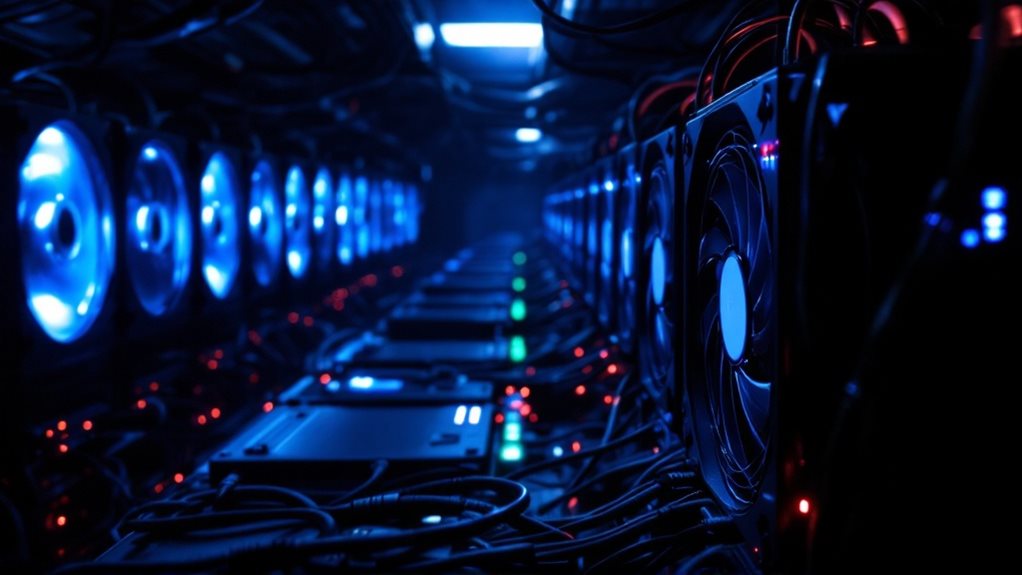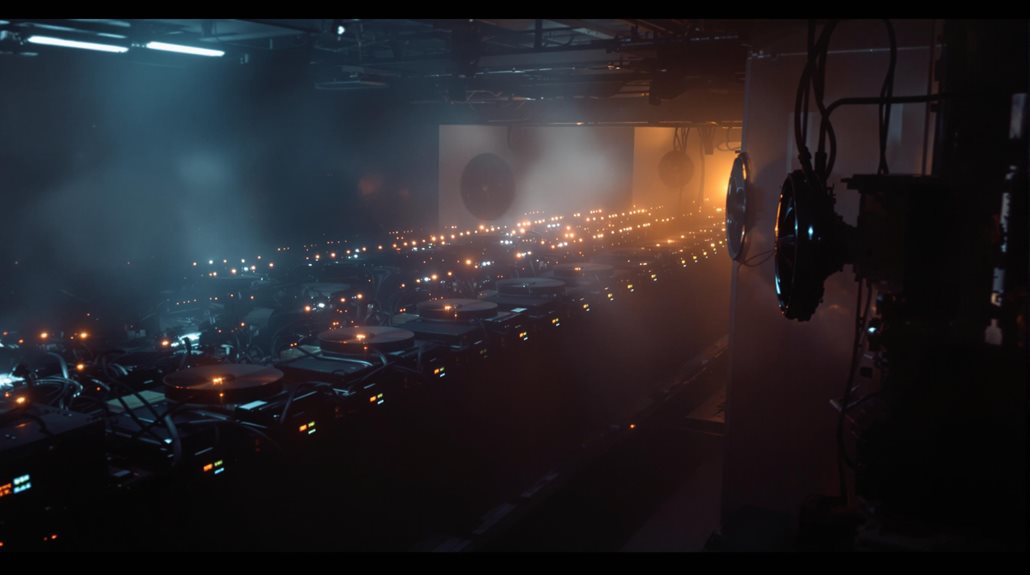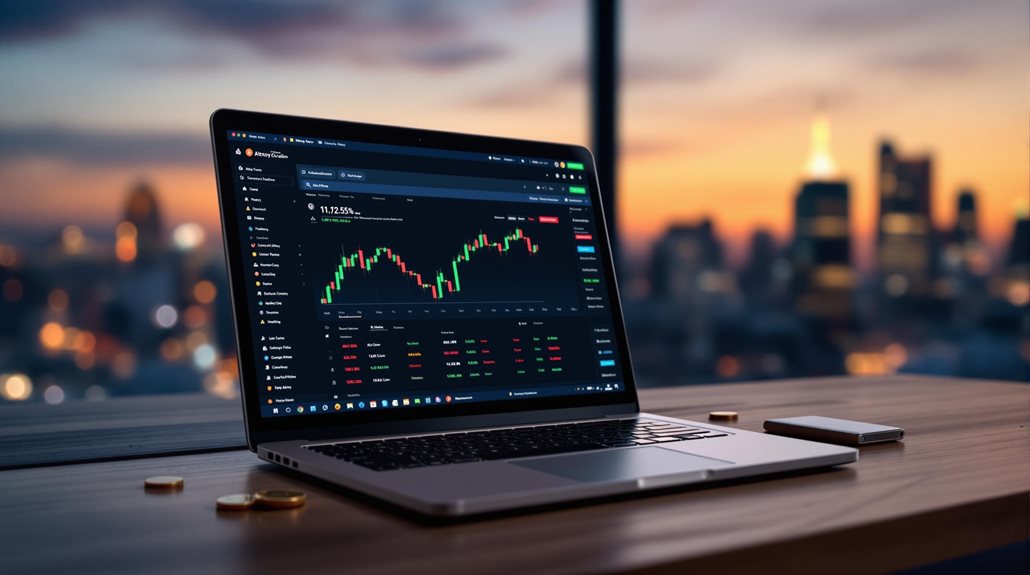Crypto mining profits depend heavily on several key factors. A miner's earnings are affected by electricity costs, hardware expenses, and current cryptocurrency prices. Large mining operations with access to cheap power can mine Bitcoin at costs between $26,000 to $28,000 per BTC. Smaller miners often choose alternative cryptocurrencies that require less investment. Pool fees typically take 1-3% of earnings. The complexity of mining economics reveals important details about potential returns.

When it comes to making money from cryptocurrency mining, potential earnings vary dramatically based on several key factors. The main things that impact mining profits are hardware costs, electricity rates, and the current price of cryptocurrencies. Mining rewards can change quickly, especially when network difficulty adjusts as more miners join or leave the network. Miners also need to take into account pool fees, which typically take 1% to 3% of their earnings. Mining difficulty has reached record levels in recent months.
Bitcoin mining in 2025 will face new challenges after the 2024 halving event, which reduces the block reward to 3.125 BTC. Large mining operations with access to cheap electricity continue to make money, but success depends heavily on using efficient ASIC hardware. Leading miners are experiencing costs between 26,000 to 28,000 dollars per bitcoin mined. The price of Bitcoin plays a significant role in determining whether miners can turn a profit, and careful planning around halving events is vital.
For those looking at alternatives to Bitcoin mining, other cryptocurrencies offer different opportunities. GPU mining remains viable for coins like Ethereum Classic and Ravencoin, while Litecoin continues to attract ASIC miners. These altcoins often require less initial investment than Bitcoin mining, and miners can switch between different coins based on profitability. The ASIC resistance of certain algorithms allows individual miners to compete more effectively. However, altcoin mining profits can change rapidly due to market demand and price swings.
Modern mining operations are using advanced technologies to boost their earnings. Some miners are implementing AI and machine learning for better equipment maintenance, while others are turning to renewable energy to cut down on power costs. Mining pools help miners earn more consistent income by combining their resources with other miners. The regulatory environment for mining keeps changing, and these changes can affect how much money miners make in different locations. Miners must solve complex puzzles using specialized hardware to validate transactions and earn rewards.
Today's successful miners focus on maximizing efficiency in every aspect of their operations. They carefully monitor their hardware's performance, energy usage, and maintenance needs. Some operations can make substantial profits, especially when cryptocurrency prices are high and electricity costs are low.
However, mining isn't always profitable, and earnings can quickly change based on market conditions. The most successful miners are those who can keep their operational costs low while maintaining high efficiency in their mining equipment. Mining remains a complex business where success depends on managing multiple variables effectively.
Frequently Asked Questions
What Are the Most Energy-Efficient Cryptocurrencies to Mine?
The most energy-efficient cryptocurrencies use alternatives to traditional mining.
Algorand stands out, using just 0.0002 kWh per transaction. Hedera Hashgraph follows with 0.001 kWh, while IOTA uses 0.11 kWh. Nano's energy use is practically zero.
These coins achieve efficiency through different technologies like Proof-of-Stake, Directed Acyclic Graph, and block-lattice architecture, rather than energy-intensive mining methods like Bitcoin's Proof-of-Work system.
How Long Does Mining Hardware Typically Last Before Requiring Replacement?
Mining hardware typically lasts between 3-5 years before needing replacement. High-quality ASIC miners can sometimes run for up to 10 years if they're well maintained.
The lifespan largely depends on operating conditions and care. Newer models tend to last longer than older ones.
Hardware starts showing signs of aging through decreased performance, higher power usage, and more frequent errors.
Temperature and dust build-up play big roles in how long the equipment lasts.
Are There Legal Restrictions on Crypto Mining in Certain Countries?
Yes, there are many legal restrictions on crypto mining worldwide.
Some countries like China, Algeria, and Nepal have completely banned it. Others have strict rules about who can mine and when.
For example, Iran only allows mining during certain seasons due to energy concerns.
Many countries that permit mining, like the USA and Canada, require miners to report their earnings for taxes and follow specific regulations.
Can Mining Damage My Computer's Components Over Time?
Crypto mining can indeed damage computer components over time. The constant strain of 24/7 operation puts significant wear and tear on GPUs, power supplies, and motherboards.
High temperatures from intense processing can degrade parts, while dust buildup can cause overheating. The components weren't designed for non-stop heavy workloads.
Power surges and improper cooling can also lead to hardware failures. It's similar to how a car engine wears down from constant high-speed driving.
What Happens to Mining Profitability After Major Cryptocurrency Network Updates?
Network updates can considerably impact mining profitability. After Bitcoin's halving events, miners' rewards are cut in half, which directly reduces their earnings.
When Ethereum switched to proof-of-stake, miners couldn't mine ETH anymore and had to switch to other coins. These changes often lead to lower profits until crypto prices adjust upward.
Some miners adapt by upgrading their equipment or moving to different cryptocurrencies, while others might stop mining altogether.





